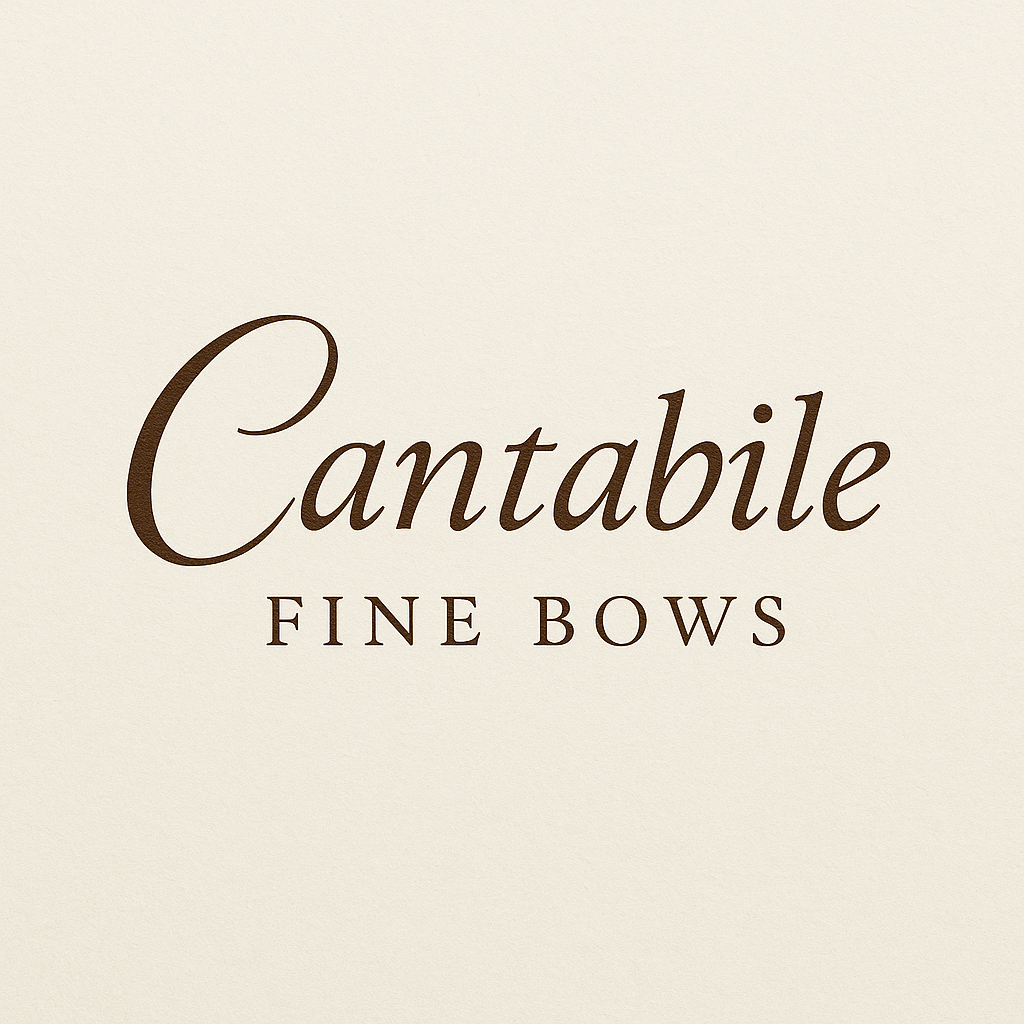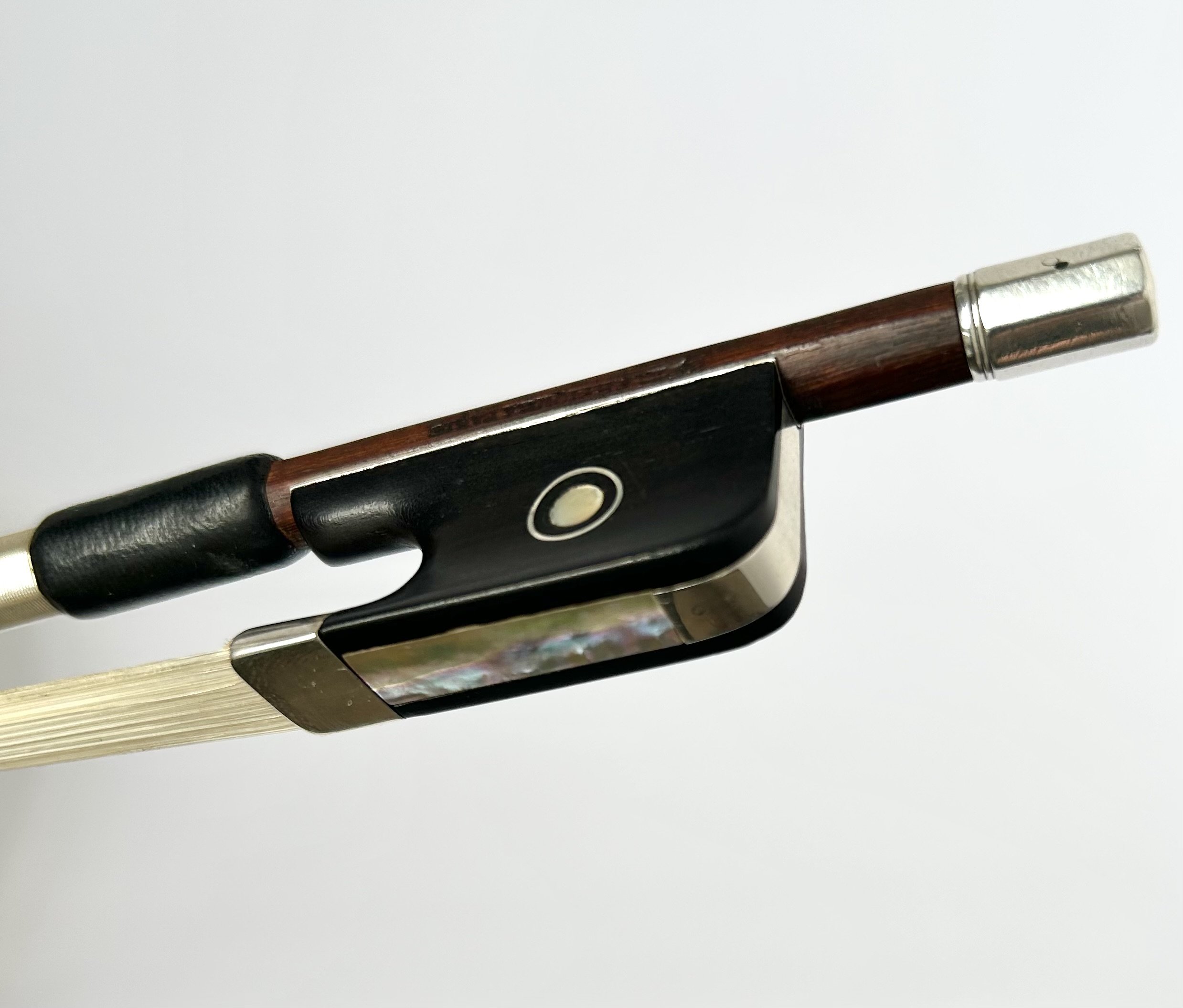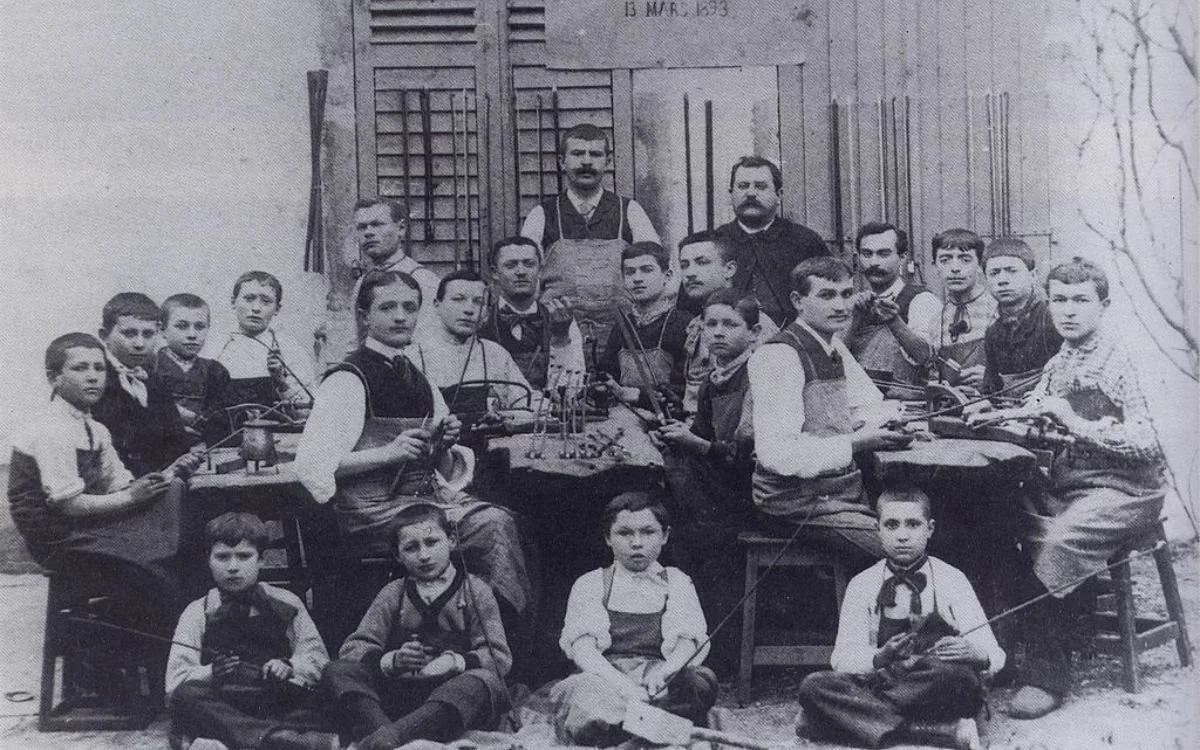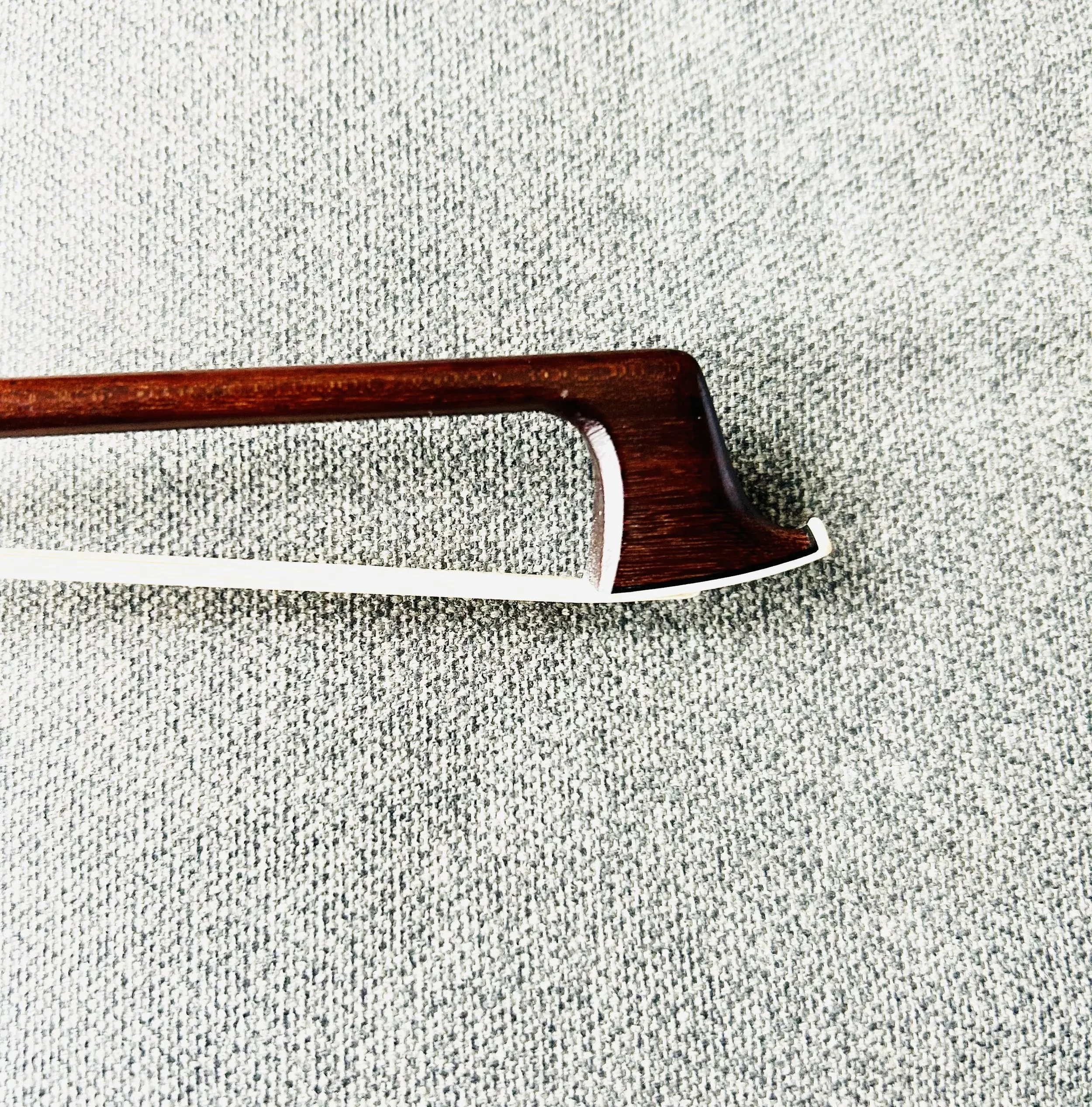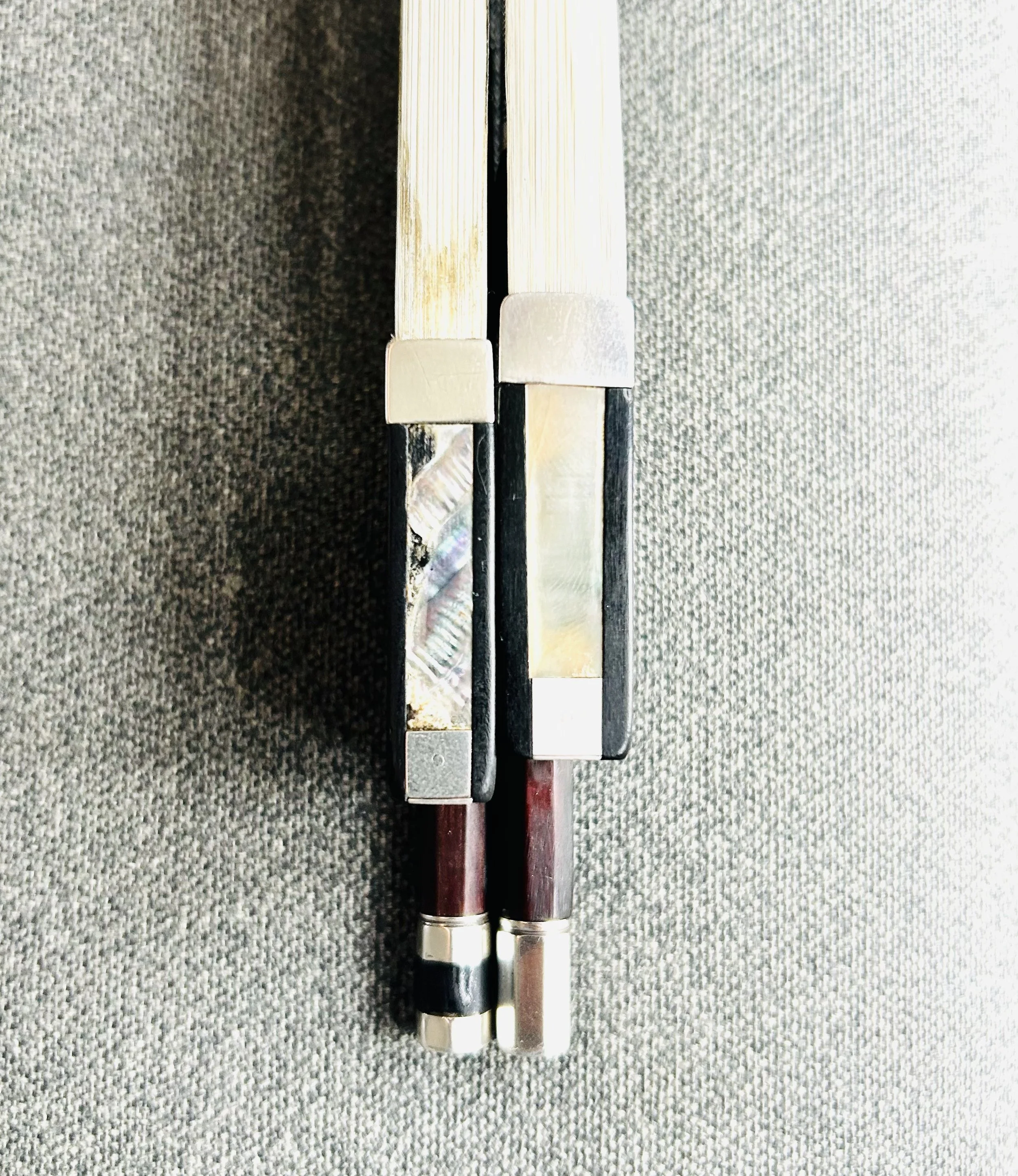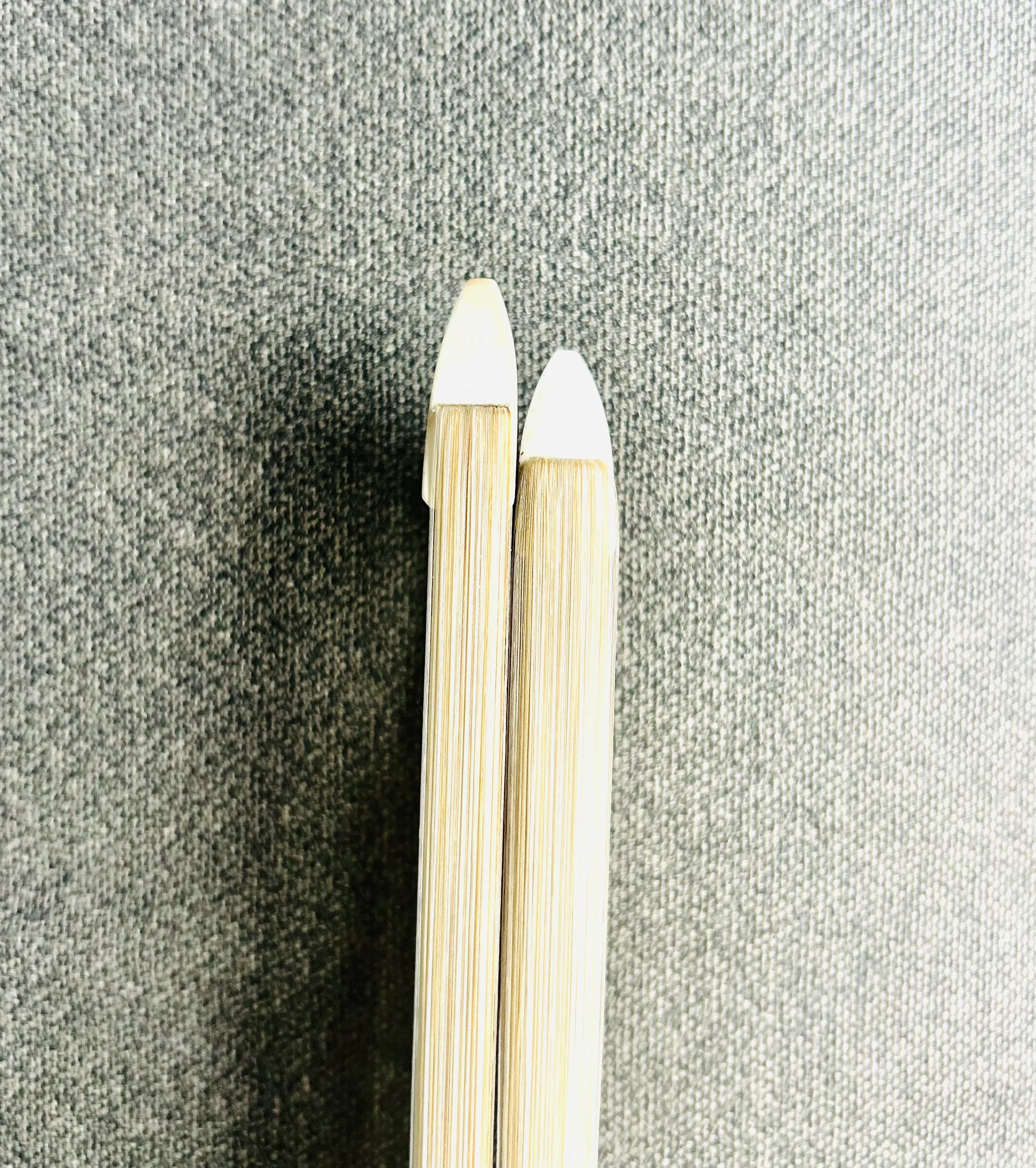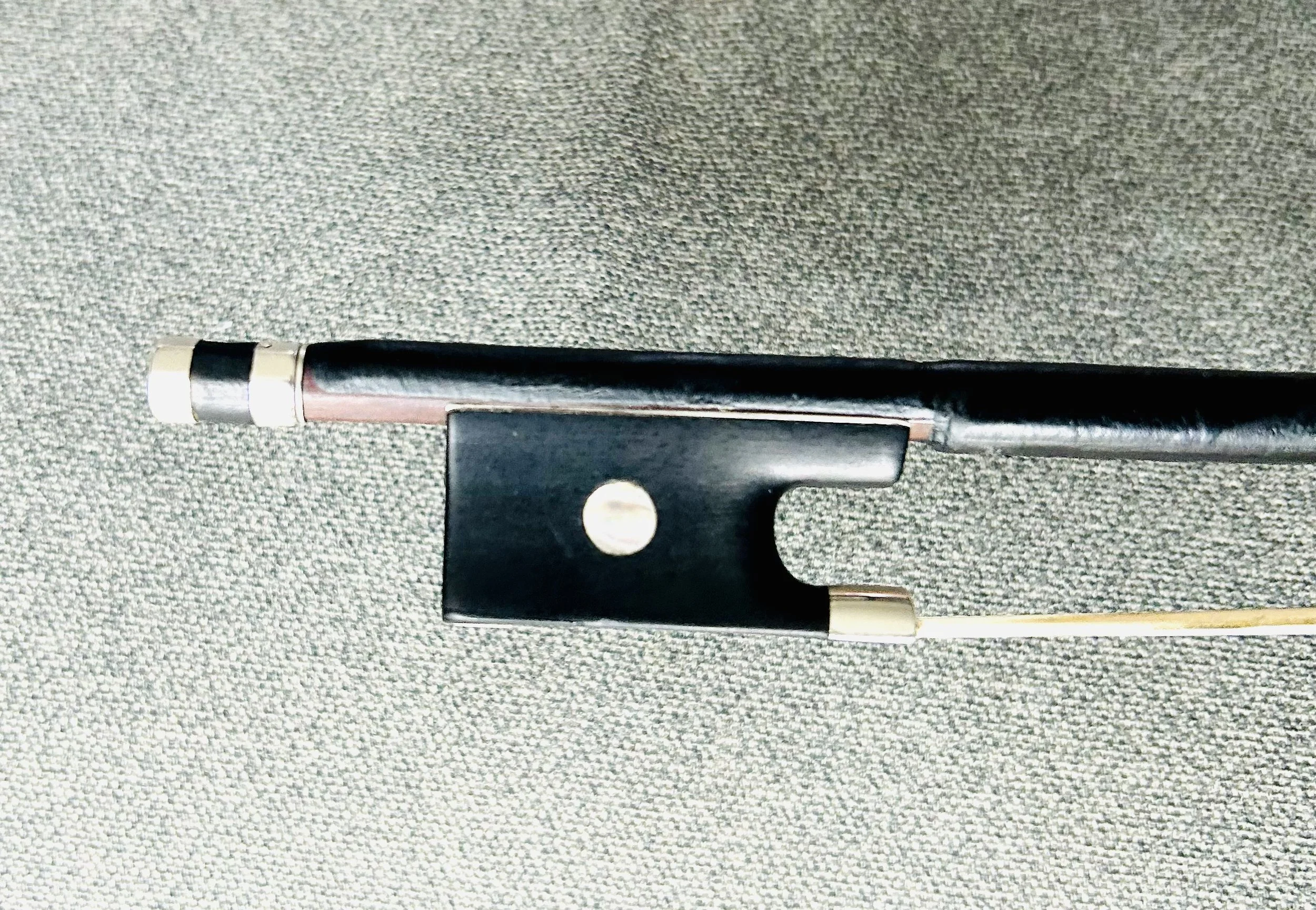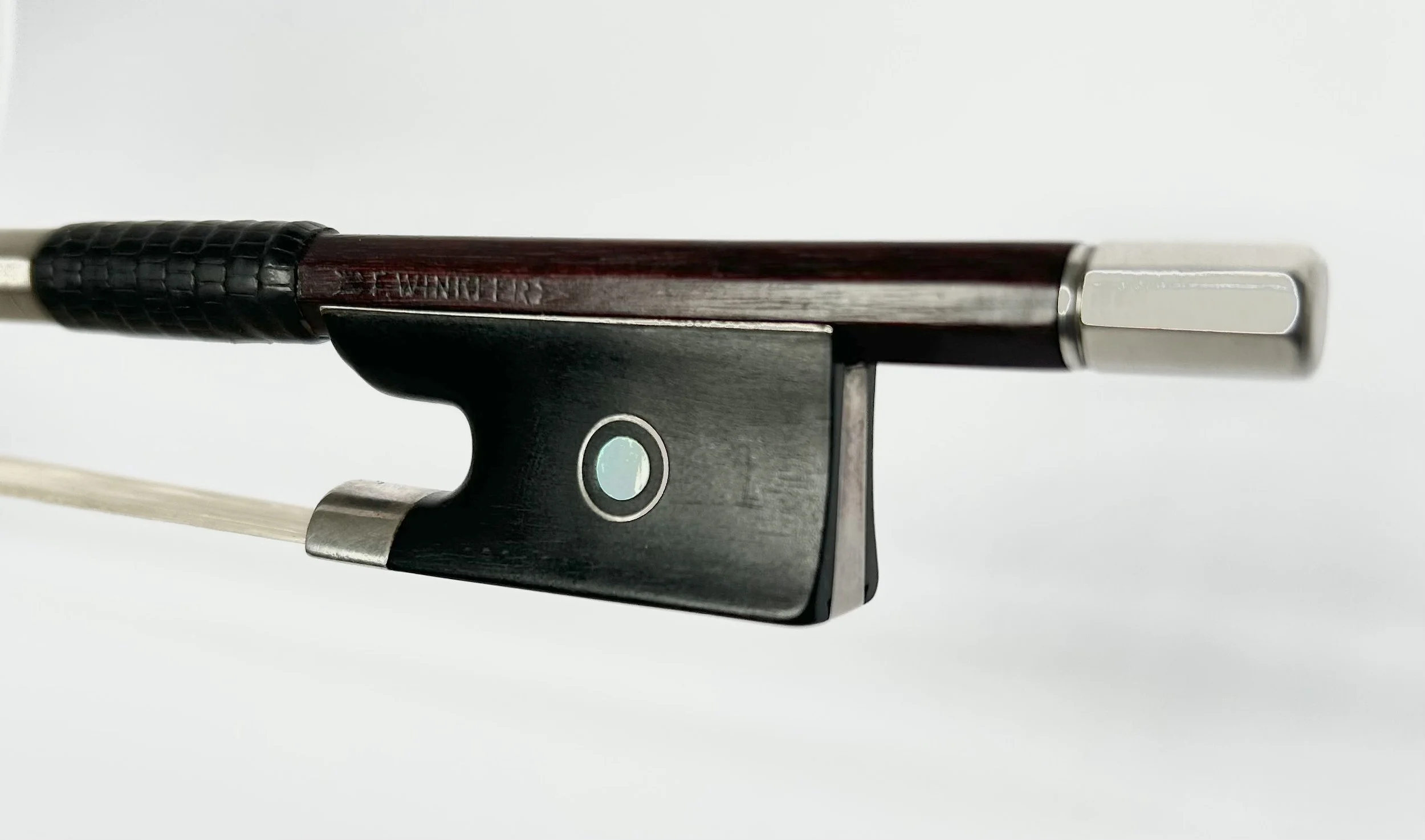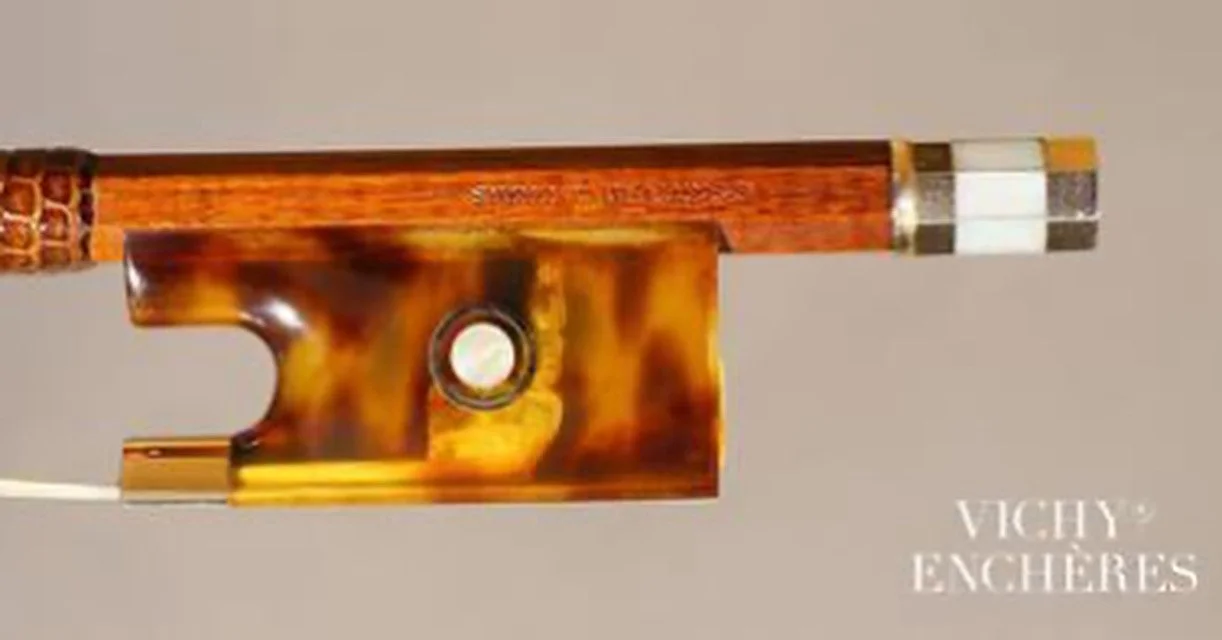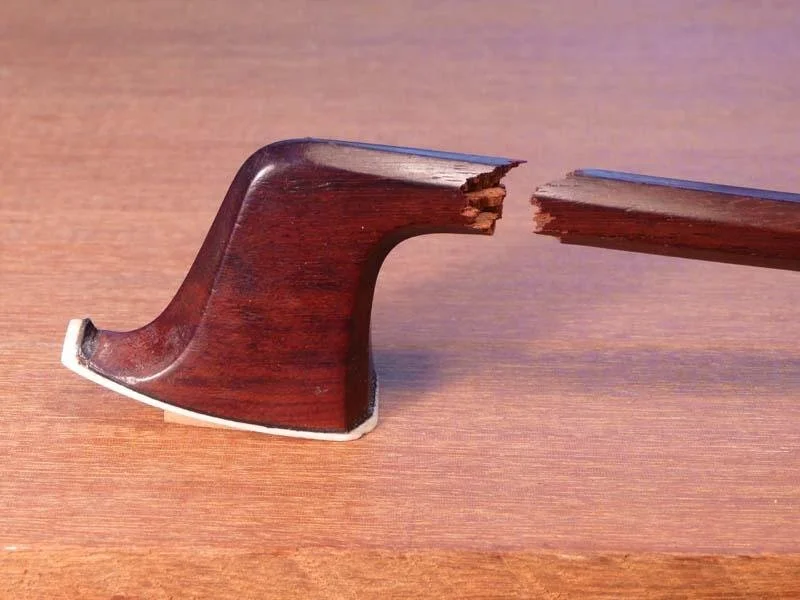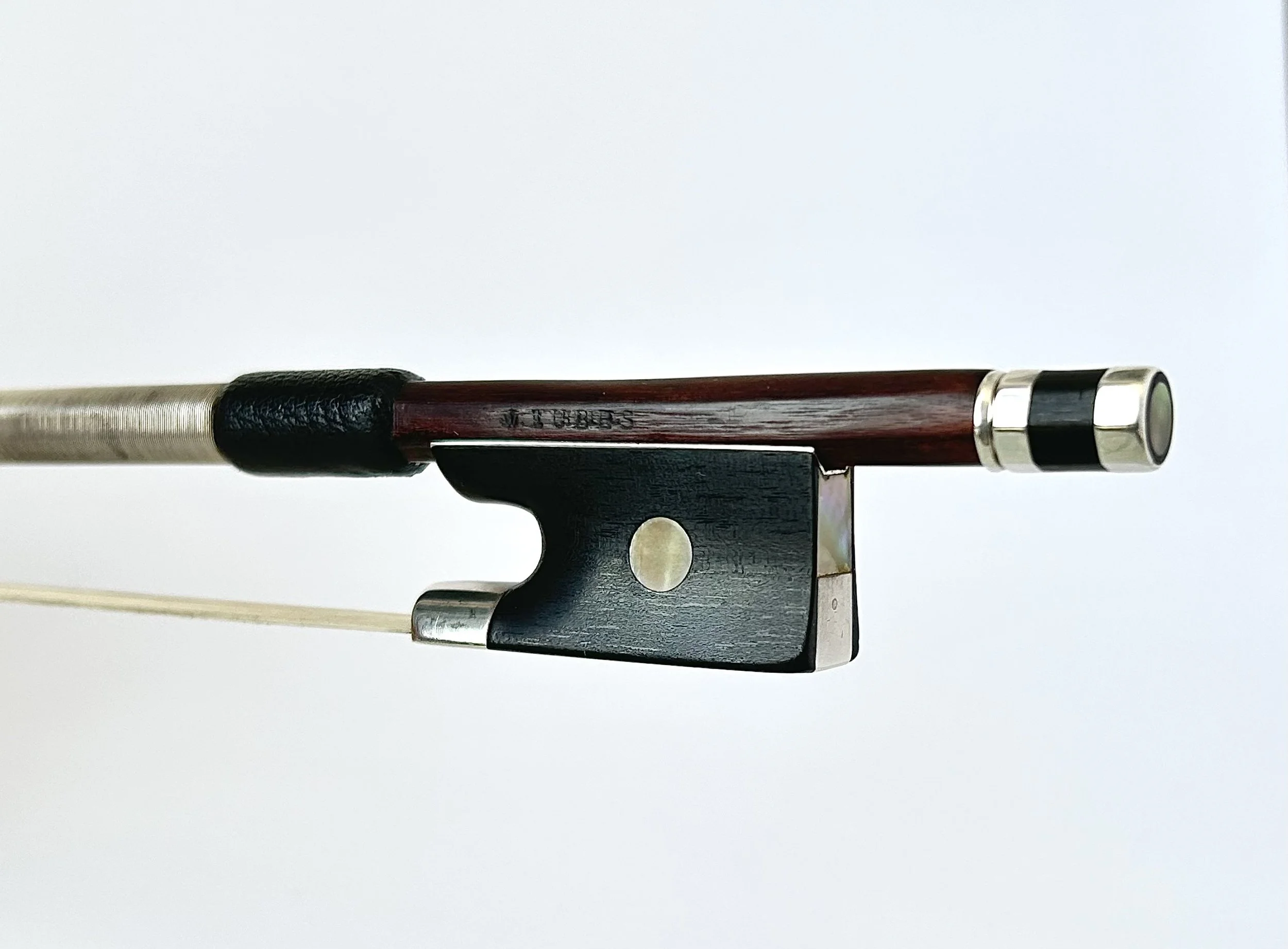The Fétique Family: A Dynasty of French Bow Makers
The Fétique name is one of the most significant in the world of French bow making. Spanning several generations, the family produced bows and instruments that range from fine concert-quality examples to more affordable trade bows. While some makers are better known than others, together they represent a fascinating slice of French lutherie from the late 19th and early 20th centuries.
⸻
Charles Claude Fétique (1853–1911)
The patriarch of the family, Charles Claude was primarily a violin maker rather than a bow maker. He was the father of three sons who each pursued the craft in different ways: Victor François, Jules, and Louis (André Louis).
Although his own work is less widely known, Charles Claude’s legacy lives on through his children. Auction records for his violins remain modest — around $2,963 (2008) — compared with the bows his sons would later produce.
⸻
Victor François Fétique (1872–1933)
The eldest son, Victor, trained first with Miquelot before joining Caressa & Français in 1901. He signed his work “Vtor Fétique à Paris”, often reflecting the style of François Nicolas Voirin.
Victor’s output was wide-ranging:
• His finest bows in gold and tortoiseshell can be stunning, with strong playability and refinement.
• Some of his work was in trade-quality bows, often made for him by other makers.
• Later bows, produced in collaboration with his nephew André Richaume, are considered excellent.
Auction prices reflect this wide spectrum, ranging from affordable trade bows to record sales such as $30,856 for a violin bow and $45,000 for a viola bow.
Victor’s son, Marcel Fétique (1899–1977), also carried the craft forward. His bows were stamped “Mcel Fétique à Paris” and show some influence from E.A. Ouchard in his later work. Marcel’s bows achieve respectable sales today, with a record around $9,970.
⸻
Jules Fétique (1875–1951)
Jules, Victor’s younger brother, is sometimes called the “poor man’s Sartory”. His career reflects a close association with the leading makers of his time:
• 1902: Joined Eugène Sartory’s Paris workshop.
• 1912: Worked for Caressa & Français.
• 1934: Entered into partnership with André Dugad, and his style began to be more influenced by Dominique Peccatte.
Jules’ bows are admired for their craftsmanship and accessibility. They remain more affordable than Sartory’s, but nonetheless desirable. Auction records include a $48,004 violin bow.
⸻
Louis (André Louis) Fétique
Another son of Charles Claude, Louis (also known as André Louis) was a violin maker, though less celebrated than his brothers. His role in the family’s history highlights the Fétiques’ versatility, spanning both instrument and bow making.
⸻
A Family Legacy
The Fétique family illustrates the breadth of French bow making in the early 20th century: from fine individual craftsmanship to high-quality trade bows that supplied a growing market of players.
For today’s musicians and collectors, Fétique bows can represent both value and artistry. While Jules’ and Victor’s finest bows can command significant auction prices, their broader output also means that it’s still possible to find an authentic French bow from a great workshop at a more approachable cost.
Whether stamped by Victor, Jules, or Marcel, Fétique bows carry forward a family name that deserves its place in the rich tradition of French lutherie.
Cantabile Collection Highlight:
We are pleased to offer a fine silver-mounted violin bow by Victor Fétique, dating from the golden period of his Paris atelier. Selected for its tonal flexibility, elegant balance, and clear lineage to the finest traditions of French craftsmanship.
A Collector’s Guide to French Violin Bows: From Workshop Secrets to Rising Values
When it comes to string instruments, violins are usually straightforward to trace: either they’re made by a specific maker and bear his or her label, or they come from a workshop and carry a clear “atelier” stamp. Violin bows, however, can be a different story altogether.
In the 20th century, French bow making flourished, producing an astonishing range of bows — but sometimes also a great deal of confusion!
Many bows weren’t stamped with the actual maker’s name at all. Instead, they were sold unbranded to violin makers or dealers, who would apply their own stamp. In some cases, several different bow makers supplied the same shop, meaning that the name engraved on the side of your bow doesn’t always tell you who actually crafted it.
Take Charles Louis Bazin, for example. One of the great Mirecourt makers, Bazin supplied bows to at least sixteen violin dealers, including Paul Buescher and Roger & Max Millant. But so did the celebrated Morizot Frères. As a result, a bow stamped “Paul Buescher” could in fact be by Bazin, by one of the Morizot brothers, or even by a lesser-known contemporary. The only way to know for sure is through detailed examination of the bow’s proportions, fittings, and craftsmanship.
This is why collectors and players alike place so much trust in specialist expertise. Subtle details — such as the type of heel plate joint, the pins in the underslide, or even the diameter of the pearl eyes — can make all the difference in identifying a bow’s true maker.
A few other well known examples or Dealers / Makers who stamped bows made by others:
• Roger & Max Millant – sold bows by Bazin, Morizot Frères, François Lotte, Ouchard, etc.
• Collin-Mezin – bows supplied by Morizot Père/Frères, Bazin, Cuniot-Hury.
• Victor Fétique – although an amazing maker himself, he also stamped bows supplied by others including Morizot Père and Ouchard.
• Jérôme Thibouville-Lamy (J.T.L.) – produced bows in-house but also bought large numbers from Bazin and some from J-J Martin.
⸻
Some C20th century makers to Know
Several French bow-making families and individuals left their mark on the 20th century. Here are just a few whose work continues to attract both players and collectors:
• The Lotte Family
François Lotte (1889–1970) and his son Roger François (1922–1989) produced bows for major Parisian firms as well as under their own names. Today, bows by either father or son are increasingly sought after, their values having risen steeply in recent years.
• Marc Laberte
Active from the 1920s to 1960, Laberte produced a wide range of bows. His silver-mounted examples, branded Marc Laberte or sometimes V.J. Ferelli, are still considered a smart purchase for players.
• The Morizot Dynasty
Louis Joseph Morizot (1874–1957), known as Morizot Père, trained with Cuniot-Hury and Charles Nicolas Bazin before establishing his own workshop. Later joined by his five sons, the Morizot Frères became a powerhouse of bow making in Mirecourt. Their bows, often stamped L. Morizot, are admired for their playability and are still accessible in price compared with some of their contemporaries.
• The Bazin Family
Perhaps the most prolific dynasty of all, spanning François Xavier Bazin (d.1865) through Charles Alfred Bazin (1907–1987). Bows by Charles Nicolas Bazin are especially prized, while those by Louis and Charles Alfred represent excellent playing tools and increasingly sound investments.
• The Ouchards
Emile François Ouchard (known as Ouchard Père) began in the Cuniot-Hury workshop and set up his own shop in 1923. His son, Emile Auguste Ouchard, later worked in Paris and Chicago, producing bows now admired for their power and elegance. His golden period is often cited as 1940–1960.
• Cuniot-Hury
Eugène Cuniot, known as Cuniot-Hury, was a pivotal maker who influenced the likes of Bazin and Ouchard. His bows, stamped Cuniot-Hury or C.H., remain well-balanced and distinctive.
⸻
Why Collect French Bows Today?
For players, French bows of this period often offer an unbeatable mix of craftsmanship, tone, and value. For collectors, they represent a growing market: while top Sartorys or Peccattes already command five or six-figure prices, the bows of Bazin, Morizot, Lotte, and Laberte are still within reach — but climbing steadily.
The key is understanding provenance. The stamp alone rarely tells the whole story. But with expert guidance, a French bow from this “golden century” can be both a joy to play and a wise investment.
⸻
👉 At Cantabile Fine Bows, we’re passionate about helping players and collectors navigate this fascinating world. If you’d like to know more about investing in French bows, feel free to get in touch — we often have examples of the makers mentioned above.
The Genius of Peccatte
Amongst the pantheon of French bow makers, one name has acquired an almost legendary status: Dominique Peccatte (1810–1874). For violinists, violists, and cellists, the feel of a Peccatte bow in the hand is something unforgettable — a union of strength, balance, and refinement that changed the very language of string playing.
From Mirecourt to Paris
Peccatte was born in Mirecourt, the cradle of French bow making. His early career took a decisive turn when he apprenticed with Jean-Baptiste Vuillaume in Paris, working alongside another young craftsman who would become equally celebrated: François Tourte’s protégé, Jean Pierre Marie Persoit. This was a heady environment, and Peccatte absorbed both the traditional elegance of Tourte’s model and the emerging push towards a more robust, modern bow.
The “Hatchet Head” Revolution
One of Peccatte’s most recognisable contributions was his head style — the so-called “hatchet head”, bold, angular, and powerful. Where Tourte’s heads had been rounded and aristocratic, Peccatte’s were strikingly muscular. This was not mere aesthetics: the broader, stronger head allowed for a different distribution of weight and a more commanding sound. Suddenly, players could dig into the string with a new kind of bite and projection, perfectly matching the demands of 19th-century virtuosi and the expanding concert hall.
The Playing Qualities
A great Peccatte bow manages that elusive combination:
• Strength without stiffness – the stick has resilience, bending deeply yet springing back with vitality.
• Clarity of articulation – sautillé and spiccato gain a brilliant edge without ever becoming harsh.
• Expressive depth – in legato, the bow seems to draw the sound out of the instrument’s soul.
Peccatte bows are often described as having a certain special energy, alive under the hand, inspiring the player towards greater creativity and boldness. Many modern violinists and cellists who try a Peccatte for the first time are startled by how it feels simultaneously athletic and elegant.
Legacy and Influence
Peccatte trained and inspired a generation — notably his brother François and nephew Charles, as well as bow makers such as Joseph Henry and Pierre Simon. Together, they formed what some call the “Peccatte school,” a movement that defined 19th-century French bow making. Even today, makers study his models obsessively, and players seek out Peccatte bows for their matchless blend of power and nuance.
Genius Defined
What makes Dominique Peccatte a genius is not only his technical mastery but his intuition: he sensed how musical life was changing, and he gave musicians the tool they needed to rise to that challenge. To hold a Peccatte is to touch a moment of innovation when craftsmanship and artistry fused. It is no wonder that his name, more than most, has become shorthand for excellence itself.
Case study - experimental design
Pictured is a silver mounted violin bow by D. Peccatte c.1850 (pictured next to a Sartory) - a marvel in experimental design. The stick length is 73.6 cm - just 6 mm more than standard - but with the frog placement, the bow gains an extra 10 mm of hair length. In concert that subtle difference feels really significant, giving the bow fantastic sustaining power and presence!.
The Life & Legacy of Franz Winkler
Master Bowmaker of Markneukirchen
Born in 1878, Franz Winkler inherited his craft in the bustling bow-making hub of Markneukirchen, Germany, from his father Franz Heinrich Winkler (1849–1919) . By 1896, he was skilled enough to start his own workshop in his hometown .
Winkler broadened his horizons internationally—working in the United States, including Philadelphia and Chicago, around the early 1900s, absorbing both American business practices and exposure to diverse musical communities . A couple of years in Paris further influenced his style, blending French bow‑making traditions with his German heritage .
Back in Markneukirchen after 1903, Winkler refined a personal model that merges French finesse with the bold Markneukirchen aesthetic—evident in his octagonal pernambuco sticks, strong-headed design, and Parisian‑eye frogs .
⸻
Craft and Character: The Winkler Touch
• Wood & Shape: Dark, fine-grained pernambuco, often octagonal, combining beauty with resilience.
• Balance & Tone: Well‑balanced sticks producing warm, resonant sound with flexibility and control .
• Frog & Mounting: Typically ebony frogs with Parisian eyes, silver mounts, pearl slides, and sometimes ivory or fossil‑ivory tip plates .
Winkler’s reputation grew thanks to his distinctive “Markneukirchen style”, shaped by French masters like Sartory or Voirin—but unmistakably German in structure and presence .
⸻
A Renaissance Artisan
In addition to bow-making, Winkler’s life was surprisingly multifaceted: he owned small restaurants in Markneukirchen and even maintained a farm outside the town, reflecting a Renaissance‑type personality striving for excellence beyond the workshop. Despite economic instability through World Wars I and II, his international connections—especially via the U.S.—helped sustain his business, and Winkler bows achieved respect and good resale values across continents .
⸻
Why His Bows Deserve Reconsideration
While French bows have long dominated prestige in the bow market, those by Winkler often offer comparable playability and tonal richness—for a much more accessible price. Today, soloists and collectors appreciate Winkler’s approach: combining French elegance and German strength, performed on stage and in studio with equal presence.
The Enduring Legacy of Sartory Violin Bows: Why Their Value Continues to Soar
For musicians and collectors alike, the name Eugène Nicolas Sartory evokes a sense of reverence and admiration. Widely regarded as the finest bow maker of the 20th century, Sartory's creations are not merely tools for music-making; they are highly coveted works of art that consistently command impressive prices in the global market. But what is it about these exquisite bows that makes them so exceptional, and why does their value continue to climb?
The Master Craftsman: Eugène Nicolas Sartory's Unparalleled Artistry
Born in 1871 in Mirecourt, France, a town steeped in the tradition of French bow making, Eugène Nicolas Sartory inherited a rich legacy. He began his apprenticeship under his father, Joseph Sartory, and further refined his skills by working with two of the most influential bow makers of his time: Charles Peccatte and Alfred Lamy in Paris. This rigorous training, combined with his innate talent, laid the foundation for a career marked by innovation and an unwavering commitment to excellence.
At the tender age of 18, in 1889, Sartory established his own workshop in Paris. From the outset, his work was characterized by a consistently high standard of craftsmanship. He absorbed influences from his mentors, particularly Lamy, which led him to develop bows with a broader head and, notably, often octagonal sticks, a feature that became more prominent after 1930. The frogs of his bows frequently exhibit a distinctive 'U' shape, a subtle yet recognizable hallmark of his work.
Sartory's bows are celebrated for their aesthetic perfection and impeccable balance. They are often seen as refined interpretations of earlier models, such as those by François Nicolas Voirin, but with Sartory's unique touch. He meticulously oversaw the quality of every bow that left his workshop, even as demand for his creations grew to such an extent that he employed other talented makers, including Louis Morizot, Jules Fétique, and Louis Gillet, all of whom would go on to become celebrated names in their own right. This dedication to quality control ensured that each Sartory bow, regardless of its specific origin within his workshop, maintained the high standards for which he became known.
Musicians consistently laud Sartory bows for their superior playability and ability to produce a rich, nuanced sound. They are described as strong, responsive, and capable of drawing a fine, rounded tone from an instrument. The choice of high-quality Pernambuco wood, combined with Sartory's masterful camber and balance, contributes to their exceptional efficiency and the ease with which they respond to a player's touch. The inherent feeling of stability and smoothness is also a highly valued characteristic among professional musicians, offering a sense of control and projection that is difficult to replicate.
1931 exhibition bow by Sartory which fetched a world record price at an exhuberant Vichy Enchères sale in 2017.
The Soaring Value: Why Sartory Bows Are a Coveted Investment
The increasing value of Sartory violin bows is a testament to their enduring appeal and the unique combination of factors that make them highly desirable in the global market. Their consistent appreciation in value can be attributed to several key elements:
1. Unwavering Quality and Performance: The primary driver of a Sartory bow's value is its exceptional quality and performance. Musicians, from students to seasoned professionals, recognize and appreciate the superior playability, balance, and sound-producing capabilities of these bows. This consistent demand from the musical community ensures a robust market for authentic Sartory bows. Unlike many mass-produced items, the artistry and precision embedded in each Sartory bow make it a timeless asset.
2. Rarity and Historical Significance: While Eugène Sartory was a prolific maker, producing a significant number of bows during his lifetime, the supply of authentic, well-preserved examples is finite. As time passes, the number of these bows in circulation that remain in excellent condition naturally diminishes, contributing to their increasing rarity. Furthermore, their historical significance as creations of one of the 20th century's most important bow makers adds to their allure. Owning a Sartory bow is not just about possessing a musical instrument; it's about holding a piece of history.
3. Proven Investment Potential: Sartory bows have consistently demonstrated strong investment potential. Auction records and sales data from reputable dealers show a steady upward trend in their prices over decades. For instance, a Sartory violin bow achieved an auction record of $214,270 in November 2017. Other sales frequently see prices ranging from tens of thousands to well over a hundred thousand dollars, depending on the bow's condition, provenance, and specific characteristics. This proven track record makes them an attractive alternative investment for those looking beyond traditional assets.
4. Authenticity and Certification: The market for high-value musical instruments places a significant emphasis on authenticity. For Sartory bows, certification from leading experts, such as J.F. Raffin, is paramount. These certifications provide buyers with assurance of the bow's genuine origin, which is crucial given the existence of copies and forgeries. The presence of a verified certificate significantly enhances a bow's market value and liquidity.
5. The 'Pernambuco' Factor: The vast majority of fine Sartory bows are crafted from Pernambuco wood (Caesalpinia echinata), a dense and resilient wood native to Brazil. This wood possesses unique acoustic properties that are ideal for bow making, contributing to the bow's strength, flexibility, and ability to produce a rich tone. Due to overharvesting and environmental concerns, Pernambuco is now an endangered species, and its export is heavily restricted. This relative scarcity of the primary material will probably further contribute to the increasing value of existing bows made from this wood, including Sartory's.
In conclusion, the escalating value of Sartory violin bows is a multifaceted phenomenon driven by their unparalleled craftsmanship, superior musical performance, historical importance, increasing rarity, and proven investment returns. For musicians, they offer an exceptional playing experience; for collectors, they represent a tangible asset that appreciates over time, solidifying Eugène Nicolas Sartory's legacy as a true master whose creations continue to captivate and inspire.
Increasing Sartory bow prices + world record price in 2017!
🎻 Caring for Your Bow: A Guide for String Players
By Cantabile Fine Bows
A fine bow is more than just a tool — it’s a partner in your playing. Whether you own a 19th-century French bow or a contemporary maker’s work, caring for your bow properly ensures it performs at its best for years to come.
Firstly - Be Careful When Removing Your Bow from the Case!
One of the most common – and easily avoidable – ways to break a bow is by pulling it out of the case too quickly. The bow tip (or “head”) can catch on the edge of the case, especially in cases where the bow holders are snug or misaligned. A sudden tug can cause the stick to snap just behind the head – a notoriously weak point. Always take a moment to guide the bow out gently, making sure it clears the case interior without catching.
Protecting the Handle with Leather or Lizard Grip
Over time, the area where your hand contacts the bow – just above the frog – can wear down from constant use. Adding a leather or lizard-skin grip not only preserves the original winding and stick underneath, but also provides better traction and comfort while playing. This small addition can significantly extend the life of the bow and is particularly worthwhile for older or historically important bows where preserving original materials matters.
Here are some further tips to help keep your bow in top condition:
🧼 1. Clean Off Rosin Regularly
After each practice or performance, gently wipe your bow stick and frog with a soft, dry cloth to remove excess rosin.
Avoid touching the hair — natural oils from your fingers can degrade it.
Don’t use alcohol cleaners - especially near the varnish.
Tip: Use a separate cloth just for your bow to avoid transferring rosin from the violin.
🔄 2. Loosen the Hair After Playing
Always loosen your bow when you’re finished playing. Leaving it tightened can cause:
Warping of the stick
Loss of camber (the bow’s natural curve)
Hair overstretching
Only tighten until there’s a gentle curve and enough clearance between the hair and stick when playing.
🌡️ 3. Watch Temperature and Humidity
Bows are sensitive to environmental changes.
Avoid leaving your bow in a hot car, cold room, or direct sunlight.
Use a case with a humidifier during dry months.
In summer, watch for hair expanding and going slack — don’t overtighten to compensate.
🎯 4. Rosin Wisely
Use only as much rosin as needed.
Too much = scratchy tone and dust buildup
Too little = lack of grip and clarity
Apply rosin evenly from frog to tip — and never force it.
🪛 5. Schedule Rehairs Regularly
Hair loses bite over time, even if it looks fine. Consider a rehair:
Every 6–12 months for regular players
After intense humidity swings or heavy use
If you notice uneven tension or a dull sound
Pro tip: Ask your luthier or bow maker for a rehair schedule based on your climate and usage.
🧳 6. Travel with Care
Always use a sturdy case with proper support for your bow.
Avoid loose bow holders or exposed hair
Never pack your bow in soft luggage or near sharp objects
For flights, keep it in carry-on luggage
🧠 7. Seek Expert Help for Repairs
If your bow gets scratched, chipped, or warped — don’t attempt DIY fixes. An experienced bow maker or restorer can preserve both function and value.
🏷️ Thinking of Investing in a Fine Bow?
At Cantabile Fine Bows, we offer carefully curated bows for every level — from collectors to advanced students. We also offer UK trials, expert advice, and ongoing support after your purchase.
📩 Have questions about caring for your current bow?
Contact us — we’re always happy to help.
James Tubbs: The English Tourte
At Cantabile Fine Bows, we often talk about bows not just as tools, but as vessels of history, craft, and character. Few bow makers embody that sentiment more than James Tubbs (1835–1921)—the most celebrated English archetier of the 19th century.
Often nicknamed “The English Tourte,” Tubbs’ work set a new standard for British bow making. His best sticks continue to be used and admired by leading players and collectors today.
A Family Tradition
Tubbs didn’t emerge in isolation—he was born into a bow-making dynasty. His father, William Tubbs, was a well-respected maker, and James began his training at his father’s bench. Across three generations, the Tubbs family established a distinct English style.
The Hill Connection: A Mark of Early Genius
In the early phase of his career, Tubbs worked for W.E. Hill & Sons, the legendary London firm.
.We’re lucky enough to have one of these rare early examples in our collection: you can just about make out that ‘J Tubbs’ has been stamped over ‘W E Hill ‘.
According to historical accounts, when Tubbs encountered one of his own creations branded with the Hill name, he reasserted authorship by stamping his own name directly over it.
🎶 What Makes a Tubbs Bow So Special?
More than just craftsmanship or history, a Tubbs bow is special because of the sound. There’s something in the way it connects to the string—drawing out depth, richness, and clarity that seems to come from within the violin itself.
Many players speak of a distinct sonic character and resonance that Tubbs bows offer. There’s a tonal core and immediacy that makes them ideal for solo or chamber playing. They seem to encourage the violin to speak more fully, more freely.
Could this be due, in part, to the exceptional Pernambuco Tubbs had access to in the 19th century? Quite possibly. The best early makers worked with old-growth Pernambuco that’s no longer really available today—dense, elastic, and acoustically alive.
Whether it’s the material, the maker’s hand, or an elusive alchemy between the two, one thing is certain:
A Tubbs bow doesn’t just play—it sings!
A Royal Bow Maker
Tubbs’ talents didn’t go unnoticed in his own time. He was appointed Bow Maker to the Duke of Edinburgh (Prince Alfred) and even featured a royal coat of arms on some of his bows. His work earned a gold medal at the 1885 International Exhibition, cementing his reputation as England’s finest.
Lasting Legacy
Whether played on stage or kept in a collection, a Tubbs bow bridges artistry and function in an extraordinary way. His influence on English bow making is still felt today, and his best bows are regularly seen in the hands of top professionals—and fetching significant sums at auction!
Victor Fétique: Master of the French Workshop Tradition
If you’ve ever held a beautifully balanced C20th French bow in your hand and felt it sing, there’s a good chance you’ve experienced some of the legacy of Victor Fétique — one of the most influential French bow makers of the early 20th century.
Born in Mirecourt in 1872, Fétique trained under his uncle Charles-Claude and worked with the prestigious Caressa & Français firm in Paris before founding his own workshop in 1913. Over the next several decades, his name became synonymous with craftsmanship, elegance, and the powerful tonal qualities so prized by string players.
The Paris Atelier: Tradition Meets Productivity
Victor Fétique’s Paris workshop was not just a one-man show — it was a centre of excellence, where some of the most gifted makers of the era honed their skills. Among them were Louis Morizot, André Richaume, and Claude Thomassin — names that later rose to prominence in their own right.
Rather than diminish Fétique’s legacy, this collaborative model is part of what made his bows so successful: each bow reflects the high standards and aesthetic vision that Fétique set for his team. It’s no exaggeration to say that his workshop helped define the modern French bow — much like the ateliers of Sartory or Hill & Sons in England.
Playing Qualities and Style
A fine Fétique bow typically features a strong, round stick, often with a slightly square head and refined chamfers. His bows are known for their quick response, balanced weight distribution, and the ability to draw out both depth and brilliance — ideal for players who seek both power and nuance.
Many examples are silver-mounted, while more luxurious bows (including those made for specific dealers or exhibitions) are gold-mounted, sometimes with tortoiseshell or ornate pearlwork.
A Lasting Legacy
Victor Fétique was awarded the prestigious title of “Meilleur Ouvrier de France” in 1927 — the highest national honour for craftsmanship — a testament to his artistry and influence.
Today, bows from the Fétique workshop are sought after not just for their playability, but for their place in the great French tradition of bow making. Whether you are a collector or a performer, owning a Fétique is owning a piece of musical history — crafted with care, and meant to be played.
Cantabile Collection Highlight:
We are pleased to offer a fine silver-mounted violin bow by Victor Fétique, dating from the golden period of his Paris atelier. Selected for its tonal flexibility, elegant balance, and clear lineage to the finest traditions of French craftsmanship.
